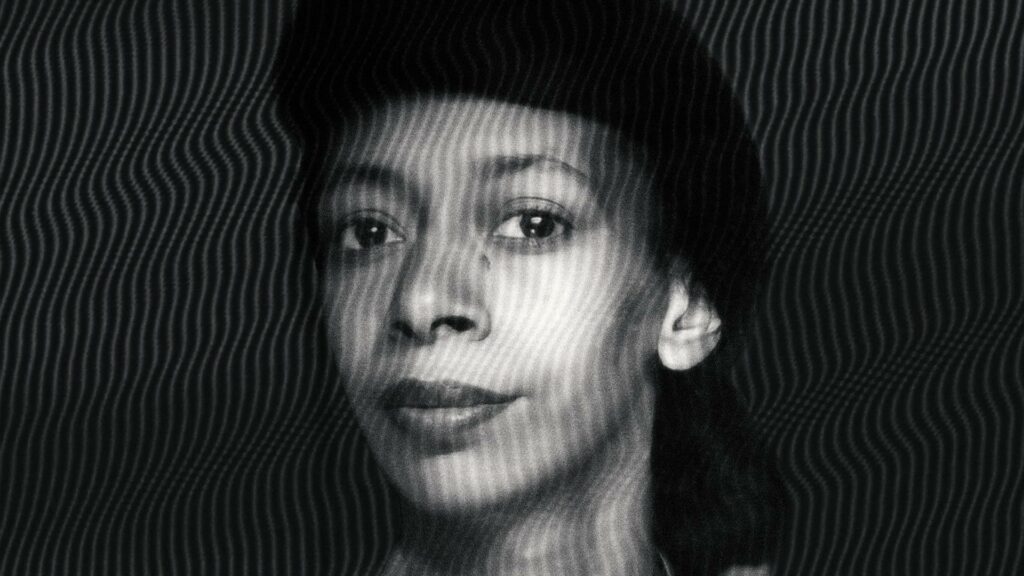I once wrote about a correlation between the Benz Truck in Lil Peep’s Benz Truck (гелик) with the Benz Truck in Yung Lean and Bladee’s Opium Dreams, where it was said those vehicles that often present as symbols of luxury and material success transcended themselves in these music videos to capture something culturally significant.
In one video, the Benz Truck was depicted as a vehicle of escape, carrying Peep towards a rural setting that contrasted with the urban landscape typically associated with luxury cars. The juxtaposition of the Benz Truck with religious iconography, such as an orthodox church in this case, suggested, in my mind, at least, a longing for sanctuary and transcendence amidst the trappings of hyperreal society. Peep’s presence within the church, juxtaposed with the sign, ‘ALL ALONE,’ evoked themes of existential solitude, the religious imagery hinting at a longing for connection and meaning beyond what is often presented in this unified aesthetic – the sad boy aesthetic – as an empty, nihilistic, secular materialism.
Similarly, in the case of Opium Dreams, the Benz Truck moved beyond the expected ‘sign-value’ associations to encompass themes of spirituality and personal sovereignty, with Yung Lean and Bladee engaging in ritualistic activities amidst a naturalistic environment, casting circles and communing with nature. This imagery aligned with the pagan notion of witchcraft as a means of asserting spiritual agency with the Benz Truck, in this case, also symbolising a means of spiritual exploration and transcendence.
These music videos played off a dualistic interpretation that concerned both the audience’s yearning for the sign-values attributed to capitalistic successes alongside a subordinate, shadowy yearning for something beyond it. Whether that was seeking sanctuary in religious spaces or engaging in ritualistic practices, these vehicles became a conduit for that spiritual exploration, a metaphor of sorts for the human quest for meaning and connection in an increasingly fragmented and technologically driven world. In many ways, this comparative analysis was an attempt to synthesise Jacques Ellul’s Christian anarchism with a kind of Baudrillardian reversibility to demonstrate how a technological society – having once secularised the world – could bring people back to God.
Since attempting this synthesis of Baudrillard and Ellul, it would seem spirituality – and all that stands antithetical to our dominant materialism – especially in a Christian sense, has become the defining feature of Bladee’s music. In fact, for those of us who were paying attention from the outset (and we were), Bladee’s aesthetic turn towards God is perhaps emblematic of broader cultural shifts, an eschatologically-rooted fantasy for a future – as Bladee related to interview magazine earlier this year – of ‘Babylon total collapse’, an eschatological adaptation on the accelerationism from which his aesthetic was perhaps once culturally and philosophically associated.
No surprises then to find Cold Visions coming as like a voice message sent from under cold blankets, listened to late at night and delivered out of the blue, a long goodbye over thirty tracks where the Bladee on these songs is Bladee at his most sensitive; the boy who just can’t seem to hang up the phone. Nevertheless, it is said before we die, we are drawn back to the places we are born, which might adequately explain why Cold Visions also evokes the frigid symbolism of Hamlet speaking to the skull of The Fool, where the heat of life has finally been lifted, bringing Bladee back to the sombre shores of Working on Dying. What’s washed up between those sombre sand castles is a kind of deadwood, a ruinous landscape, a sad and snowy sea where ships no longer sail.
The album’s expected cohabitation of the manic and the sad – which is to say a kind of melancholic miscibility – has developed here as something profoundly (hyper)eschatological in scope, reviewing a life in which Blade, deployed for over a decade as the antic disposition of Benjamin Reichwald, has perhaps finally come to an end. As such, this album is about as cheery as visiting McDonalds only to find out the McFlurry machine isn’t working, an album about the artist imagining himself dead and buried and – if we are to take Bladee seriously – in hell; where the only thing left to discuss in the aftermath of his passing is what park bench he sat upon.
Cold Visions is about what Bladee’s got left for us then, an inheritance passed on, an announcement that says, now I’m dead and gone, here’s what you’ve been asking for all along – oh, btw, it’s Working on Dying Vol. II. It is, in this way, the bits and pieces left over in the cardboard box once the house is sold, and whether that box of treasures is going to be treasured is not up to Bladee anymore despite him feeling desperately worried, paranoid throughout even, that this cardboard box – this act of remembrance – might just end up on the fire with all the other cultural refuse not worth another listen.
What we have to remember when traversing this dark night of the soul is that these visions are precisely that – visions – and it’s very much a personal vision of what Bladee’s life might have amounted to had he listened to the naysayers; had he given them precisely what they wanted by pursing the nihilism of an aesthetic to its most extreme in a culture where ‘My body rotten,’ becomes in Bladee’s own words, ‘the price of being modern’. This violent extremity is what our hyperculture often demands of its artists today, whereby how cool you are is measured by your existential intensity in a culture forever asking how far are you willing to swim out, and at what farthest point are you willing to drown?
Not only has Bladee drowned like Ophelia here, but the Cocytus has frozen over with an ice-cold imagery metaphorically deployed to describe the spiritual state of those whose love for God and others has diminished due to the prevalence of sin. It is something straight out of Dante’s Inferno, the ice dancer’s lake kept eternally frozen from lucifer’s beating wings, the coldest place in hell where Evil Bladee – having betrayed God – feels he belongs.
In many ways, Bladee’s Opium Dreams is the thematically condensed version of what we receive aurally on Cold Visions, right down to the pathetic fallacy encoded into the imagery of rain. Compare the paranormal effect of the practically liquid-cooled autotune in ‘Black clouds I see / Rain shame on me’ present on this trackwith the ghastly illustration of rainfall throughout Cold Visions whereby ‘this rain is on me pouring’ comes as a recurring motif in both ONLY GOD IS MADE PERFECT and PM2. Beyond the post-ironic cliché of depression as precipitation there exists alongside this imagery of rain this persistent schema of the dark night of the soul invoked in both Opium Dreams’ ‘Night of the soul, dark, dark’ and D.O.A’s ’Stuck in the night […] Dark cloud around my head.’ Looking back and I can’t help but notice a thematic consistency between Opium Dreams and Cold Visions, whether that’s demonstrated in reference to the dark night of the soul throughout FALSE, or the Lacoste jackets in SAD MEAL, or even the frequent use of ‘Heavy rain falling forever on an everlasting flame.’
From the earliest incarnations found on tracks like Who’s Going To Find Me Tonight? to tracks like FALSE, there is the ubiquitous concern for ‘the night’ felt across Bladee’s entire discography, with those specific lyrics to Opium Dreams acting as a contemporary facilitation of a concept that originates from the 16th century in the writings of the Spanish mystic, St. John of the Cross. In these writings – much as it is used today in the lyrics to Opium Dreams and RED CROSS’ additionally self-referential, ‘Tinted window on the Benz / We’re with wizards in it’ – ‘the night’, which Bladee is often consuming as a form of nourishment (e.g in the lyrics of Nike Just Do It), is taken in reference to profound spiritual crisis; a period of intense inner turmoil and despair that one may experience on the journey toward union with the divine.
It is significant to this analysis – and perhaps a retrospective account of Blade’s trajectory as an artist in general – that both Nike Just Do It and Who’s Going To Find Me Tonight? also make mention of Jesus Christ. Nevertheless, the recurring idea of having consumed this spiritual crisis for the purpose of inspirational ‘gain’ has been associated, in some certain way, with the Hegelian dialectic when it should, in fact, be read in the context of Christian Gnosticism – perpetual synthesis – the interplay of good and evil, and the ‘loss and gain’ cosmology of Bladee as both ‘angel or demon, maybe’. If The Fool was dealing with the angelic standard then Cold Visions is very much dealing with the demonic equivalent of Evil Bladee as a Mephistophelian representation less enamoured with sin today and increasingly mired by its accompanying sense of spiritual emptiness. As such, Cold Visions captures an intense experience of nihilism that whilst extremely challenging and painful, is consistently viewed throughout Bladee’s work as a necessary stage in the process of spiritual growth and awakening, with many religious traditions recognising this experience as a crucial step towards a deeper, more authentic connection with the divine or higher self.
Opium Dreams, released as a stand alone track, premiered on 6 July 2020, with the album 333 released ten days later, on July 16, 2020. It is my contention that Cold Visions should be considered both the prequel mythology to 333 and an album that acts as decryption for the aesthetic turn that took place thereafter. Furthermore, the track End of the road Boyz, which is perhaps wrongly taken today as a statement of retirement, is more likely a reference to a now deleted tweet put out in 2018 in the aftermath of Red Light, when those feelings of existential dread expressed throughout Cold Visions were publicly expressed. This theory is shored up when we consider the commercial and critical reception that Red Light received at the time of its release, making it perhaps the most under appreciated album of the entire discography.
We should also consider how Cold Visions nears its closure with the aforementioned track, PM2, which is an abbreviation of Puppet Master 2, the sequel track to Puppet Master, a track from the album Red Light which also features the significant lyrics, ‘I had ups and downs but it’s falling into place / Like the love from God when you look me in my face.’ With many additional references to bygone projects, Cold Visions is very much an album that is dealing in sequels and yet hidden amongst a series of tracks made as sequels is concealed an entire album made as a prequel. This is perhaps ‘the riddle’ Bladee hints towards throughout the album with the oft suggestion that listeners ‘read between the lines’ as if there is something hidden – occulted – and left to be discovered.
Perhaps this process of discovery is aided by the album artwork which is, arguably, the intimate composition of a face – Bladee’s face perhaps – an abstract portrait where ‘I paint better than Rembrandt’ Bladee boasts on WODRAINER in reference to both the famous painter and the album’s cover. We’d do well to remember that Bladee is also a visual artist, therefore looking to this artwork as another piece of the puzzle then – as I suspect Bladee as artist wants us to do – you’ll find a face, intimate and insular, dark and troubled, drawing the viewing perspective inward to match a troubled introspection, the terrible sensation of being swallowed up by the mind. If we could only turn around and exit this dark solipsism we’d be greeted by the heavenly and mystical landscape that adorns the cover of 333 – and when Cold Visions works as a conceptual prequel, that’s exactly what we get. The numerological significance that features on the album, especially where numerology concerns time signatures is perhaps the greatest example of Bladee’s Esoteric Christianity to date with the complete runtime of Cold Visions coming in at sixty-three (63) minutes, which is, in the numerological sense, an abbreviated form of 666. An intriguing use of numbers is also prevalent in the final two OUTRO tracks. The existence of two OUTRO tracks is indeed dualistically significant but is perhaps not as significant as the exact runtimes of both tracks coming in at three mintues, thirty-three seconds, (3.33). Considering the importance of threes in Bladee’s cosmology we’d do well to look for a third and final numerological event, with these time signatures acting as our guide to the 333 album.
In the end Bladee’s music – particularly these later works – are demonstrative of a profound spiritual and religious influence, with lyrics that often reflect themes of transcendence, existential struggle, and a search for meaning beyond that ‘reptilian’ materialism addressed in tracks like FALSE. Nihilism and spiritual emptiness, coupled with references to Christian mysticism and eschatology, become suggestive of a complex relationship with faith where a thematic shift in the drain gang aesthetic also aligns with a broader cultural movement towards spirituality and eschatological thinking, particularly in response to the perceived fragmentation and meaninglessness of contemporary, technologically-driven society.
Whilst it’s a stretch to classify this music strictly as Christian music in the traditional sense, Bladee’s lyrics and aesthetic have increasingly incorporated Christian motifs and eschatological themes, marking a significant departure from the nihilism that characterised much of his earlier work. Perhaps this newfound sense of Gnostic-coded duality can indeed be read as an attempt to reconcile or highlight the ongoing tension between secular material success and spiritual fulfilment.
Whether conceptual prequel or not, Cold Visions is certainly the final expression of Evil Bladee before he finds God in COLD VISIONS (OUTRO 2), ‘Lets think, lets sing / Won’t you let the love in / God is love is my / Love’. Wouldn’t it be shocking if Bladee’s project was always an ecclesiastical one; an attempt in music – as Christians have always desperately attempted – to make ‘his holy light shine upon you’, to make the acceptance of God’s love seem really darn trendy in the end. And so, whether we like it or not, Cold Visions ends with this acceptance of God’s love, in addition, with Bladee exiting the frozen lake to a place where flowers bloom once more; where those flowers have always been, in fact, buried under snow, where even after total collapse, ‘Spring comes, they’ll grow.’
Cover photo by The Come Up Show
Next story


